
These are images of various aspects of a typical journey to and from medical services for someone living in poverty. I will ask people how they feel about each image as part of my interactive ethnography.
Outreach Services invites you to share your talents, your time and your concerns for our community. We commit to assuring every volunteer a thorough orientation, a voice in the development of new programs, and an opportunity to contribute to the mission of SJHS.

These are images of various aspects of a typical journey to and from medical services for someone living in poverty. I will ask people how they feel about each image as part of my interactive ethnography.
Kari Tarman heads Marketing and Communications at Oaklawn. Oaklawn is an organization that provides mental health and addiction services in South Bend, Mishawaka, Goshen, and Elkhart. The organization provides transportation for many of their clients since they are unable to drive. Learning about their transportation services provided insight into how we can help St. Joseph Health System with their issues transporting patients. Below are the questions I asked with summaries of our discussion, as well as key insights gained.
Could you please tell me about Oaklawn’s mission and the specific population you serve?
How does Oaklawn bill for transportation?
What are the efficiencies and inefficiencies of Oaklawn’s transportation service?
What are the pros and cons of South Bend Transpo, private companies like Uber and Lyft, and services provided by the specific corporation?
Do you mind providing some insight into the typical day as a driver?
Key Insights:
Excellent work team! You have two expert interviews complete. For other interviews, please conduct the interview in context if possible. It would be helpful to have the expert show you how they find information they need or complete certain tasks. Or to show you how they believe patients/users complete certain tasks. When in context the AEIOU framework you started to use to capture your Starbucks interview will make a lot more sense. This also would give you meaningful photos. I like that your team provided a Google link to the more-depth interview.
The immersion was spot on! Actually waiting for the bus and feeling those struggles really helps you to connect with a user. And nice job with the empathy around the length of time the trip took, the price of the ride, and the fact that the user may be not feeling well or have physical challenges complicating their process. Was the return trip home similar? Were the trip times consistent and convenient?
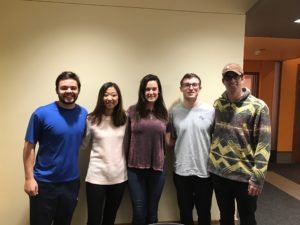
Dan Thompson, Helen Sung, Alexandra Charron, Cole Gillan, Joe Krause
Interview- 2/24/17
Joe and Alex sat down with Geoff Zimpelman to discuss the current transportation problems and solutions that exist for the Saint Joseph Health Systems group. As manager of population health and multi-cultural access at Saint Joseph Health Systems, Geoff has unique knowledge regarding the standing problem. Over the past few years, Geoff has worked with many community centered organizations to find sustainable solutions that would allow all people to have access to transportation, especially when it comes to making doctor appointments and other medical visits. The current transportation problem has various layers including lack of knowledge, low funding, and overall inefficient services. It seems that people working in this space have a few ideas that could work, but they are “waiting” for something big to happen that will allow their ideas (solutions) to come into fruition. Attached is the Ethnographic Summary that will go into more detail regarding our interview with Geoff.
Geoff Zimpelman- Ethnography Summary – Google Docs
Expert Interview 2/13/16
Phone Interview led by Alexandra Charron with whole team present
The team started off our expert interviews by interviewing project contact Michelle Peters to get her perspective on the project and define a scope. Michelle is the Director of Community Health and Well- Being for Saint Joseph Health System. Through speaking with her, our team discovered the following issues and insights.
Michelle also provided us with contact information of other experts within the St Joseph Health Care system as well as contacts at other organizations in the area to speak with who might provide context, experience, or advice.
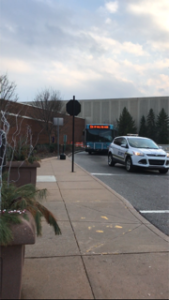 Cole and I rode the South Bend Transpo as part of our immersion experience for our project. We wanted to take a bus from any South Bend location to St. Joseph Regional Medical Center. We got on the bus near the intersection of Ironwood and Route 23. Fortunately, the ride was free since we had our Notre Dame IDs; but a bus ride typically costs $1 for a resident. If someone is handicap, they can request a ride from a van for $2.
Cole and I rode the South Bend Transpo as part of our immersion experience for our project. We wanted to take a bus from any South Bend location to St. Joseph Regional Medical Center. We got on the bus near the intersection of Ironwood and Route 23. Fortunately, the ride was free since we had our Notre Dame IDs; but a bus ride typically costs $1 for a resident. If someone is handicap, they can request a ride from a van for $2.
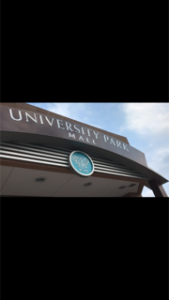 The first bus route did not include St. Joseph Medical Center though. We had to stop at University Park Mall where we had to wait 30 minutes. Fortunately, Cole and I were able to walk around the mall to pass the time; but many people cannot spend any leisure time away from the bus stop because they are sick or absolutely cannot risk missing the bus.
The first bus route did not include St. Joseph Medical Center though. We had to stop at University Park Mall where we had to wait 30 minutes. Fortunately, Cole and I were able to walk around the mall to pass the time; but many people cannot spend any leisure time away from the bus stop because they are sick or absolutely cannot risk missing the bus.
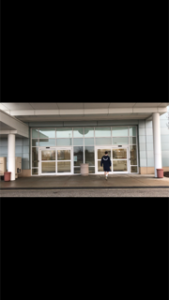 After we boarded the bus at the mall, it made a few stops then finally reached St. Joseph’s. The bus dropped us off at the door and our simulated immersion was over.
After we boarded the bus at the mall, it made a few stops then finally reached St. Joseph’s. The bus dropped us off at the door and our simulated immersion was over.
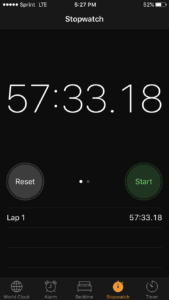 Looking back on our trip on the bus to the hospital, we gained valuable insight into the challenges that many people face while trying to get to medical appointments. Although the bus drivers were very friendly and buses were on time, our trip from bus stop to hospital took 57 and a half minutes. This is especially concerning because many of St. Joseph’s patients come from work and cannot afford the time it takes to go on an hour bus ride, spend an indefinite time at their appointment, and go on another hour long return ride. This immersion will be very helpful as we frame and conduct the rest of our research.
Looking back on our trip on the bus to the hospital, we gained valuable insight into the challenges that many people face while trying to get to medical appointments. Although the bus drivers were very friendly and buses were on time, our trip from bus stop to hospital took 57 and a half minutes. This is especially concerning because many of St. Joseph’s patients come from work and cannot afford the time it takes to go on an hour bus ride, spend an indefinite time at their appointment, and go on another hour long return ride. This immersion will be very helpful as we frame and conduct the rest of our research.
You are off to a great start. What’s your team name? And please include your team photo – at the top if possible.
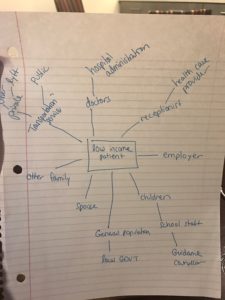
Journey Map
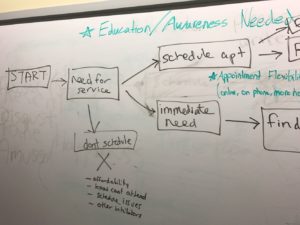
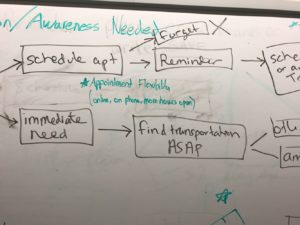
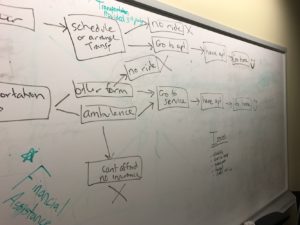
Design Brief- St. Joseph Health Systems